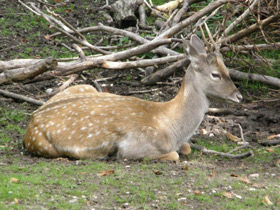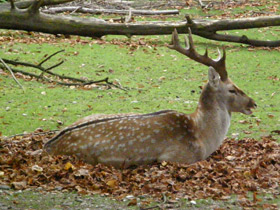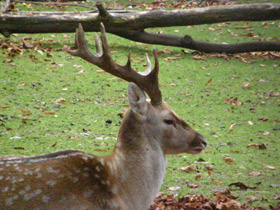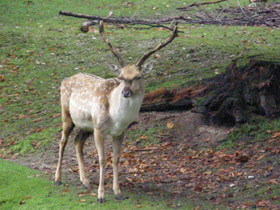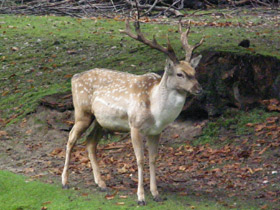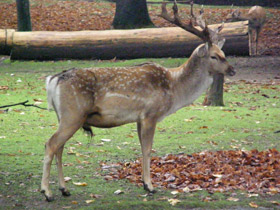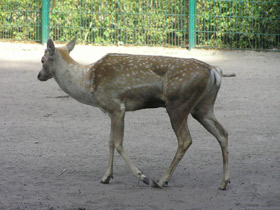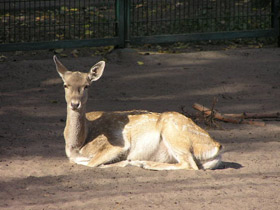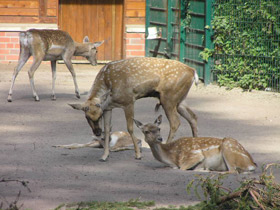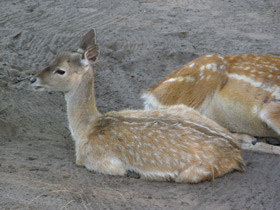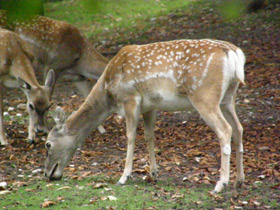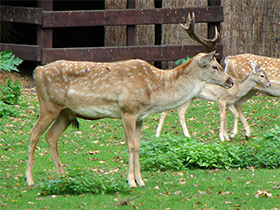The Persian fallow deer Dama mesopotamica
For a long time the Persian fallow deer was regarded as a subspecies of Cervus dama but recent findings of genetic and evolutionary studies have demonstrated that Dama mesopotamica is a separate species. The Persian fallow deer is somewhat larger than the European fallow deer. Males’ antlers are fairly big but have fewer branches than the antlers of their European cousins. The Persian fallow deer males grow antlers every year through their whole life. These deer are very rare and today their range is restricted to the small area in the Khugestan Province in Iran, two wildlife refuges in Mazandaran Province in Iran, north of Israel, one island in the Iranian Urmia Lake, and some parts of Iraq. The Persian fallow deer prefer open woodlands. Lush grasses are most important components of their diet but when they are not available, these deer would graze on scrub sprouts and browse. The Persian fallow deer are active during the day, mostly foraging and spending some time in the dense reed thickets where they rest in the hot weather. Rut in these deer occurs in August or early September, with sparring of competing males taking place from time to time. Gestation lasts about 225 days, and offspring are usually born in March or early April.
After the Persian fallow deer was originally described in 1875, its populations declined dramatically, and by 1917, the species was thought to have become extinct. In the following 50 yeas encounters with wild specimens were sporadically reported but no convincing evidences have been ever found to confirm the presence of the wild Persian fallow deer. Finally, in 1955, a special expedition of the IUCN has rediscovered a small population of perhaps 25 animals in a dense forested region in Iran. In the absence of special conservation actions this species was doomed to extinction. Georg von Opel, the founder of the famous German car company, was the first to respond to the appeal to save the Persian fallow deer. He was able to obtain a pair of wild caught calves and had brought the animals to his Zoo in Kronberg for establishing the nucleus of captive population. At this time, the Persian fallow deer are successfully bred in zoos and natural parks of Iran, Israel, and Germany. After 1996, the deer born in Hai Bar Carmel Reserve were successfully reintroduced in the wild in the north of Israel, and over 650 individuals are now found in Galilee region, Carmel mountain ridge, and in the area of Sorek River basin.

















